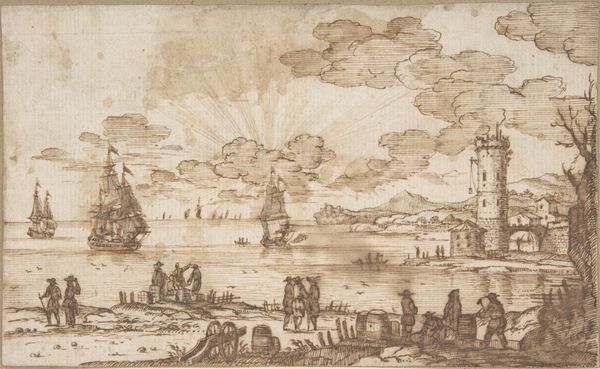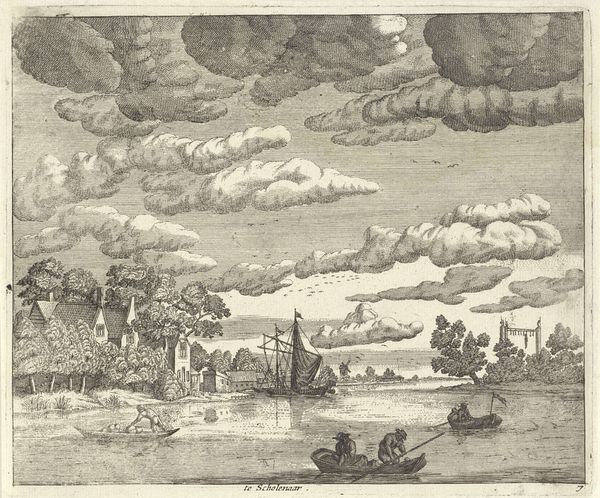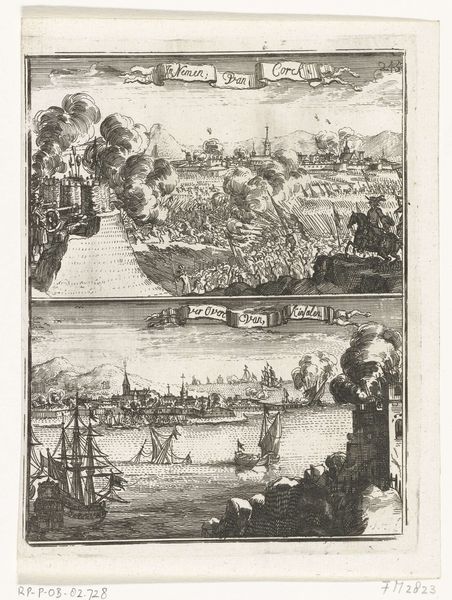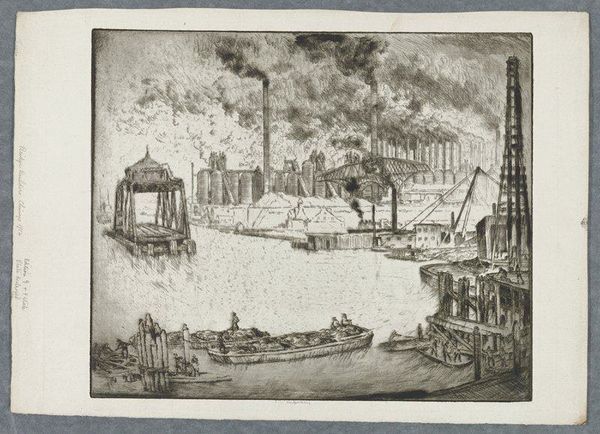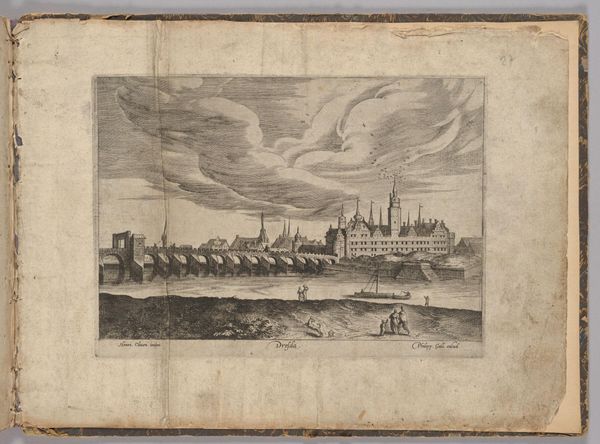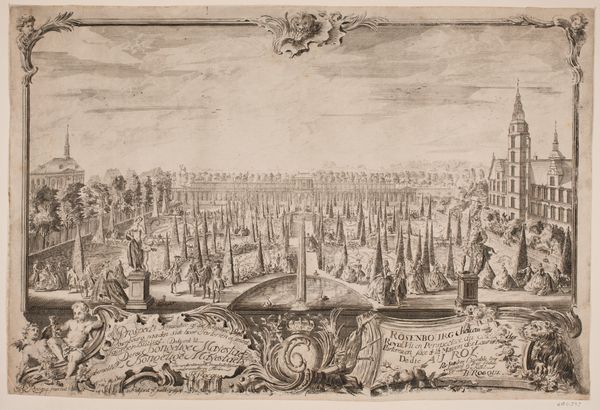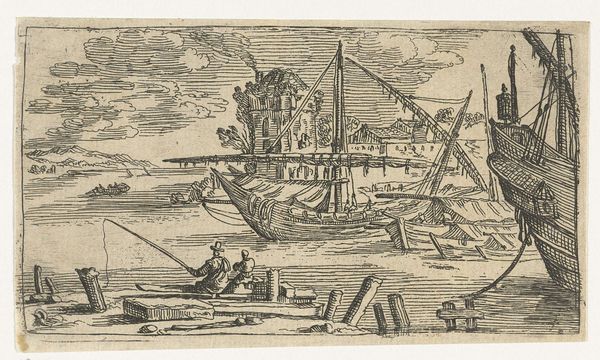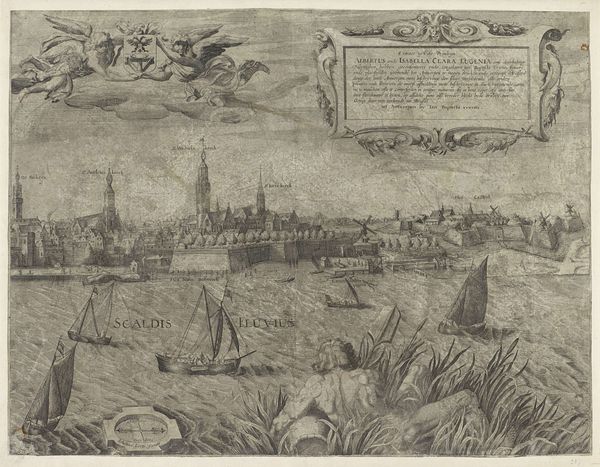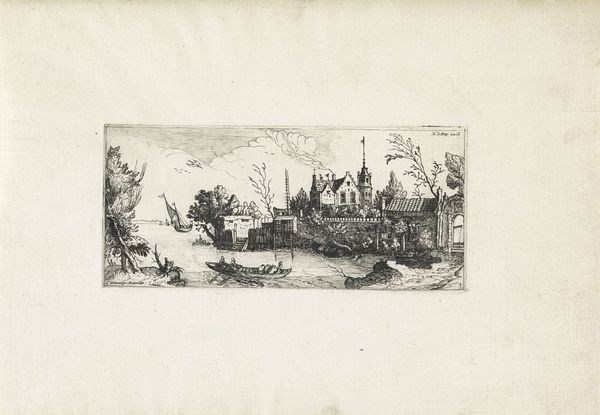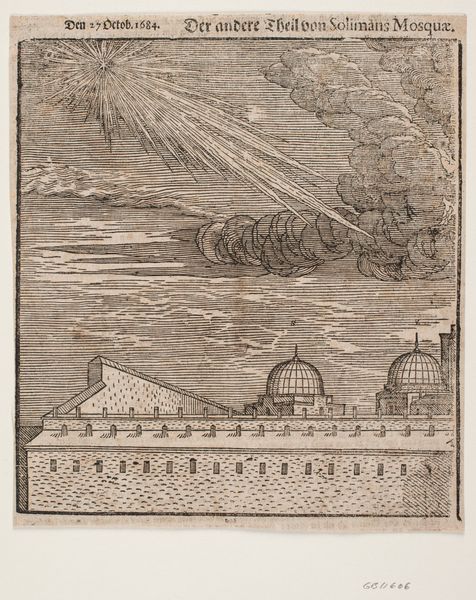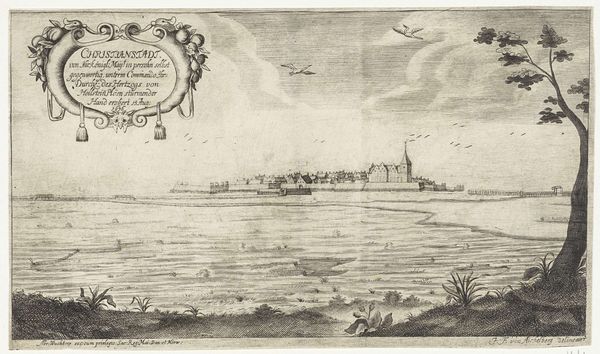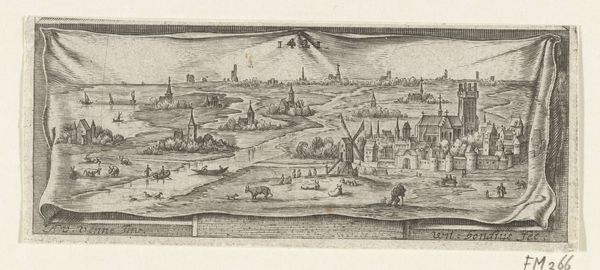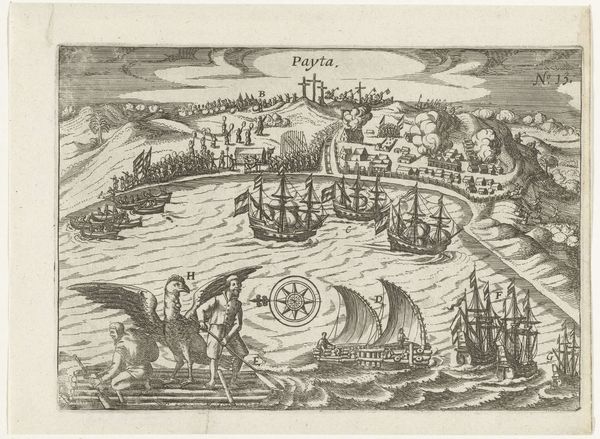
The Süleymaniye mosque, as seen from from the northeast. Right half 1570
0:00
0:00
print, woodcut
# print
#
asian-art
#
etching
#
woodcut
#
pen work
#
cityscape
#
islamic-art
Dimensions: 205 mm (height) x 175 mm (width) (bladmaal)
Curator: Welcome. We're looking at Melchior Lorck's "The Süleymaniye Mosque, as seen from the northeast, Right half," created around 1570. It's a compelling example of printmaking from that era, currently held at the Statens Museum for Kunst. Editor: My first impression is drama! Look at those monumental clouds dominating the skyline. The minaret struggles to assert itself against their grandeur. Curator: Indeed. The sky commands attention, yet the structure itself carries deep symbolic weight. Mosques serve as architectural emblems of faith, acting as a spatial embodiment of spiritual presence within the urban landscape. Editor: And think of the process: the fine lines etched, probably in metal or carved in wood, to replicate this scene. It’s not just the subject that speaks, it’s the labor invested, the material choices driving the visual outcome. These meticulous techniques demonstrate a skilled artisanship of replication to serve knowledge and politics, I think. Curator: Absolutely, this intricate technique allows for widespread dissemination of the image, creating access across various contexts and demographics, thus extending its influence far beyond a physical place. It connects back to its time and forward through it. Editor: And let's not forget the economic aspects. Who commissioned it? Who bought and sold it? Printmaking makes visual media affordable to the rising middle class during the 16th century. How do the political aspirations of those consumers and of the image maker materialize here? Curator: It becomes a powerful means to communicate not only religious ideas, but also social hierarchies and world views. This one presents a clear perspective, solidifying its intended message. Editor: For me, seeing the work's tangible aspect changes its feel altogether. Instead of only considering how architectural shapes carry abstract cultural concepts, this image compels me to consider its role within society as both commodity and propaganda, its availability, distribution, and ultimate consumption as a shaper of perceptions and worldviews. Curator: That grounds my somewhat theoretical view of it, certainly. Thanks, I appreciate gaining insight into this powerful view of cultural diffusion in the early modern period. Editor: Likewise, it's crucial not to dismiss the artwork’s significance in visualizing and concretizing meaning as signs evolve through both material processes and shared memory.
Comments
No comments
Be the first to comment and join the conversation on the ultimate creative platform.
